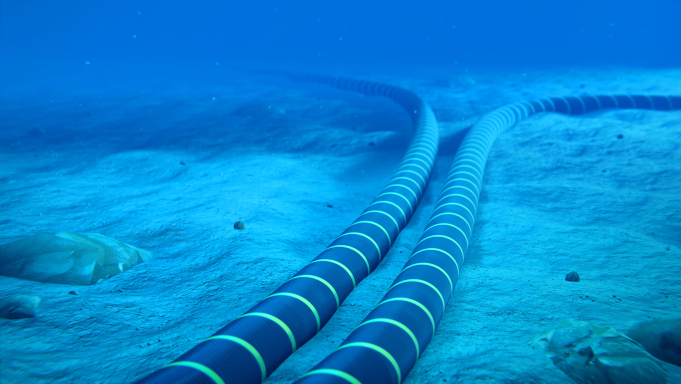Novel solution for MVDC and HVDC cable insulation

The extension of power grid interconnection with an increased amount of power flow control, the long-distance transmission, and the integration of large blocks of wind, solar and hydro powers all call for the accelerated development of high voltage direct current (HVDC) transmission. Despite the opportunities such as lower power loss, higher capacity for a fixed corridor, fully controllable power flow, better transmission and stabilization capabilities between non-synchronized AC power systems, and no length restriction because of free reactive power compensation, there are still significant technical challenges for HVDC cabling systems. The electric field distribution under DC voltage in the cylindrical cable insulation initiates with the Laplacian electric field distribution; however, the thermal gradient (TG) across the insulation and the change of the electrical conductivity because of its temperature dependence under loading conditions will lead to the phenomenon of electric field inversion across the dielectric. In addition, the electric field distribution across a DC cable insulation is affected and often distorted by the accumulation of space charge. Therefore, controlled electrical conductivity and highly suppressed space charge accumulation are desired for tailoring the electric field across the cable insulation under DC. Full characterization and detailed understanding of these properties as well as their correlation may bring the ability to engineer needed dielectric properties for using as DC cable insulation. With respect to implications for practical material design, the study demonstrates that a polymer material with activation energies in the range of 0.4 to 0.5 eV with relatively high trap density can be suitable for HVDC cable insulation.
The mass-impregnated (MI) insulations have been used traditionally for DC cabling systems with line-commutated converter (LCC) schemes. The MI insulations produced by a lapping process could be considered as a layered composite structure with excellent performance under polarity reversal condition which is essential for changing the direction of power flow in LCC systems. Compared with MI insulation cables, polymeric insulations such as crosslinked polyethylene (XLPE) insulations are lighter, less expensive, and less harmful to the environment compared with MI insulation cables and can be manufactured by continuous extrusion process and conveniently extended during installation by oil-free pre-molded joints. However, DC cables with XLPE insulation are only applicable for the voltage source converter (VSC) systems. Therefore, there still exists the need for insulation with the advantages of both MI and polymeric insulations, i.e., an extrudable insulation that is compatible with polarity reversal. A model DC material based on the ethylene propylene rubber (EPR) incorporated with 2D inorganic nanoclays is proposed. The DC electrical properties of the proposed material show large improvement in space charge suppression, controlled electrical conductivity and consequently more uniform electric field distribution. Microstructure studies suggest the uniform and oriented distribution of 2D nanoclay particles in EPR matrix causes a desired trap distribution with high density of shallow traps due to the presence of a high interfacial area between polymer chains and nanoclay particles. The macroscopic effect of that is a significant reduction of activation energy which contributes to controlling the charge transport and suppressing the space charge accumulation in the composite dielectrics. Results of the thermally stimulated depolarization current spectra of the samples are in good agreement with the predicted trap distribution based on the experimental results and morphological study.
Date and Time
Location
Hosts
Registration
-
 Add Event to Calendar
Add Event to Calendar
Loading virtual attendance info...
- Contact Event Host
- Co-sponsored by IEEE DEIS M&C Co-chair - Jim Guo
Speakers
Mohamadreza of University of Connecticut
Biography:
Mohamadreza Arab Baferani received his BSc degree in Electrical Engineering from the Iran University of Science and Technology in 2013 and MSc from the University of Tehran in 2015. He worked as an electrical engineer in Niroo Research Institute, Tehran for more than two years. He started his Ph.D. degree in Electrical Engineering at the University of Connecticut in 2018. Currently, he is a Ph.D. candidate in the Department of Electrical and Computer Engineering and a research assistant at the Electrical Insulation Research Center (EIRC), Institute of Materials Science, University of Connecticut. His main research interests are HVDC cable systems, composite polymeric insulations, electrification under harsh condition, and fault current limiters.

